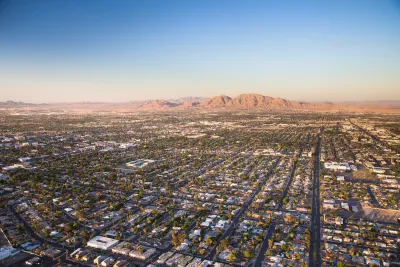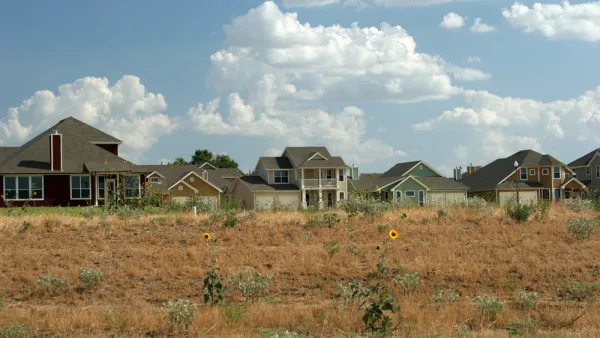Having sprawled for the past few decades, the Las Vegas region is bumping up against undevelopable federal lands. Those limits give it the chance to consider a denser, more urban future.

“At 5,046 residents per square mile, the City of Las Vegas is not exactly Hoboken, but it’s denser than you'd imagine,” writes Josh Stephens in the California Planning & Development Report. “It has plenty of small houses on small lots (making it relatively inexpensive on a per-unit basis), and it has its share of small apartment buildings. Many residents commute to one of the greatest concentrations of employment (especially blue-collar employment) in the country: the Las Vegas Strip. So, there are gravitational forces keeping residents in the city.”
“To its credit, Las Vegas wants to grow. It wants none of the slow-growth paralysis that has hobbled too many parts of California. Unfortunately, Lombardo's plea indicates that he wants Las Vegas to continue to sprawl, presumably by continuing to build inexpensive single-family homes, parking-heavy apartment complexes, and whatever inconsequential commercial developments are needed to keep suburbanites fed, fit, and fueled up.”
“Gov. Lombardo has said that provision of housing 'begins with eliminating governmental barriers to development.' Sure, but it doesn't have to be the federal government that does the eliminating.”
“Back in 1972, architects Robert Venturi, Denise Scott Brown, and Steve Izenour famously celebrated Las Vegas’s design sensibilities. They reveled in the superficiality of signage and simulacra. Now, Las Vegas — not the Strip, but the actual city — faces the opportunity to get real.”
FULL STORY: Las Vegas' Opportunity to Learn from California

National Parks Layoffs Will Cause Communities to Lose Billions
Thousands of essential park workers were laid off this week, just before the busy spring break season.

Retro-silient?: America’s First “Eco-burb,” The Woodlands Turns 50
A master-planned community north of Houston offers lessons on green infrastructure and resilient design, but falls short of its founder’s lofty affordability and walkability goals.

Delivering for America Plan Will Downgrade Mail Service in at Least 49.5 Percent of Zip Codes
Republican and Democrat lawmakers criticize the plan for its disproportionate negative impact on rural communities.

Test News Post 1
This is a summary

Test News Headline 46
Test for the image on the front page.

Balancing Bombs and Butterflies: How the National Guard Protects a Rare Species
The National Guard at Fort Indiantown Gap uses GIS technology and land management strategies to balance military training with conservation efforts, ensuring the survival of the rare eastern regal fritillary butterfly.
Urban Design for Planners 1: Software Tools
This six-course series explores essential urban design concepts using open source software and equips planners with the tools they need to participate fully in the urban design process.
Planning for Universal Design
Learn the tools for implementing Universal Design in planning regulations.
EMC Planning Group, Inc.
Planetizen
Planetizen
Mpact (formerly Rail~Volution)
Great Falls Development Authority, Inc.
HUDs Office of Policy Development and Research
NYU Wagner Graduate School of Public Service





























